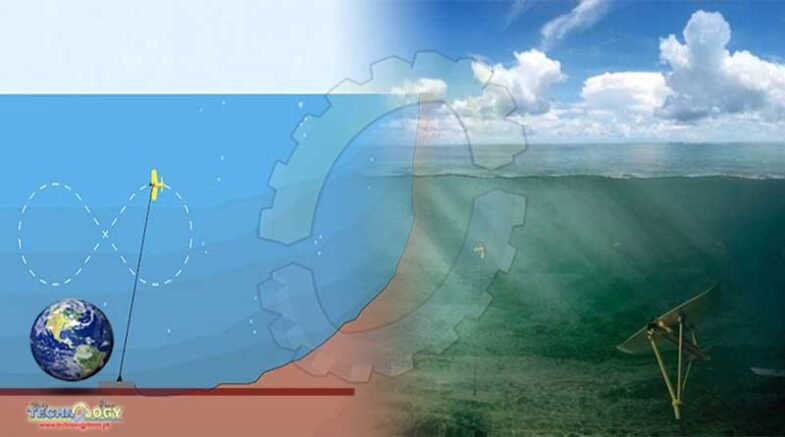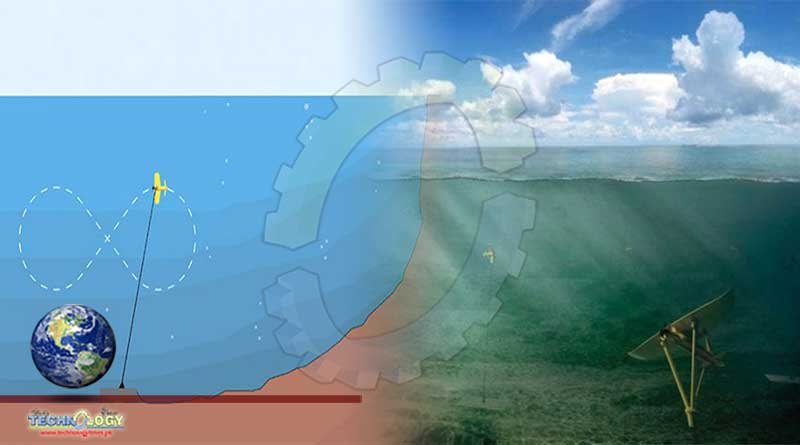An archipelago in the northeast Atlantic Ocean uses Minesto’s kite-like technology to produce electricity from tidal power, called Deep Green.

An archipelago in the northeast Atlantic Ocean (between Iceland and Scotland) uses Minesto’s kite-like technology to produce electricity from tidal power. The tech, called Deep Green, takes the concept of stunt kite flying and transfers it into the water to generate electricity.
Minesto explains how the device works on its website simply:
Imagine that you are standing on a beach, flying a kite in the wind. You feel the strong lift force from the kite in the rope as the wind tries to carry the kite away. As you move the kite sideways, you notice that it flies fast – way faster than the wind is blowing.
If you would attach a turbine to the kite and put it in the ocean, where a water current flows instead of the wind blowing, you would have the concept of Deep Green, Minesto’s patented and awarded ocean energy power plant.
The Atlantic Project is already sending electricity to the grid a part of a power purchase agreement with Faroese utility SEV. It’s one of the latest examples of marine-based technology being deployed to combat climate change.
The project consists of a small 100-kilowatt tidal kite system known as DG100. Minesto installed it in the Vestmannasund strait, in the northwest of the Faroe Islands, in October 2020. The archipelago is one of several locations interested in developing marine-based renewable energy systems.
Hakun Djurhuus, SEV’s CEO, said:
Although this is still on (a) trial basis, we are confident that tidal energy will play a significant part in … Faroese sustainable electricity generation. Unlike other sustainable sources, tidal energy is predictable, making it more stable than other sources such as wind power.
Deep Green can generate electricity from low-flow tidal streams and ocean currents. The kite’s wing uses the hydrodynamic lift force created by the current to move, which pushes the turbine through the water in a pre-determined figure of eight. The kite steers autonomously using an onboard control system and rudders.
The system enables the turbine to experience a water flow several times stronger than the actual stream speed. Meaning, the electricity produced is several hundred times greater than if the turbine would be stationary.
The generator collects the power diffused by the turbine and outputs the electricity through a cable in the tether, which is linked to a seabed umbilical that transfers the electricity to an onshore connection.
Other advantages over other renewables include:
- No visual impact
- It’s up to 15 times lighter and smaller per MW (Megawatt) than competing technologies.
- Minimal environmental impact (the kite works in unison with the marine environment).
- It’s the only known tech to cost-effectively generate electricity where current velocities are as low as 1.2–2.4 m/s and at depths of over 60 meters.
- Predictable electricity production (tides can be calculated with nearly 100% accuracy, and currents are practically constant).
- The detachable design allows for service and maintenance procedures to take place onshore.
Minesto and SEV’s next ambition is to develop microgrid and utility-scale systems.
Meanwhile, in the United States, Verdant Power’s tidal turbines will soon provide clean energy to New York City. And the US DoE (Department of Energy) just allocated $35 million to eleven hydrokinetic projects.
Slowly but surely, marine energy is making its entrance worldwide.
Originally published at Intelligent Living
